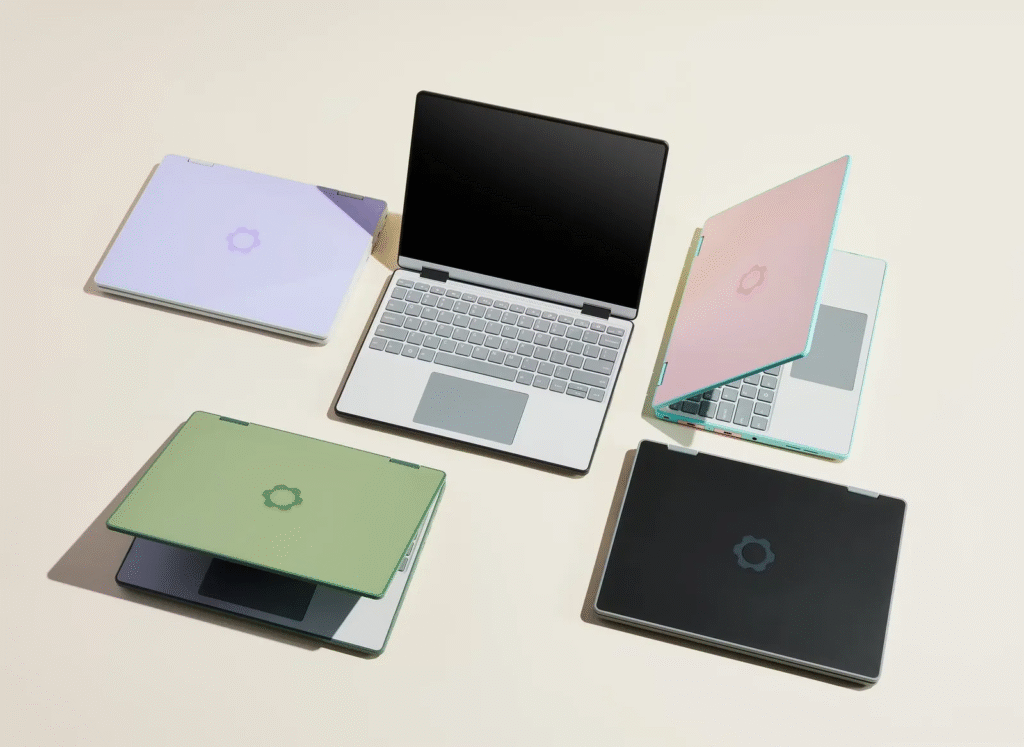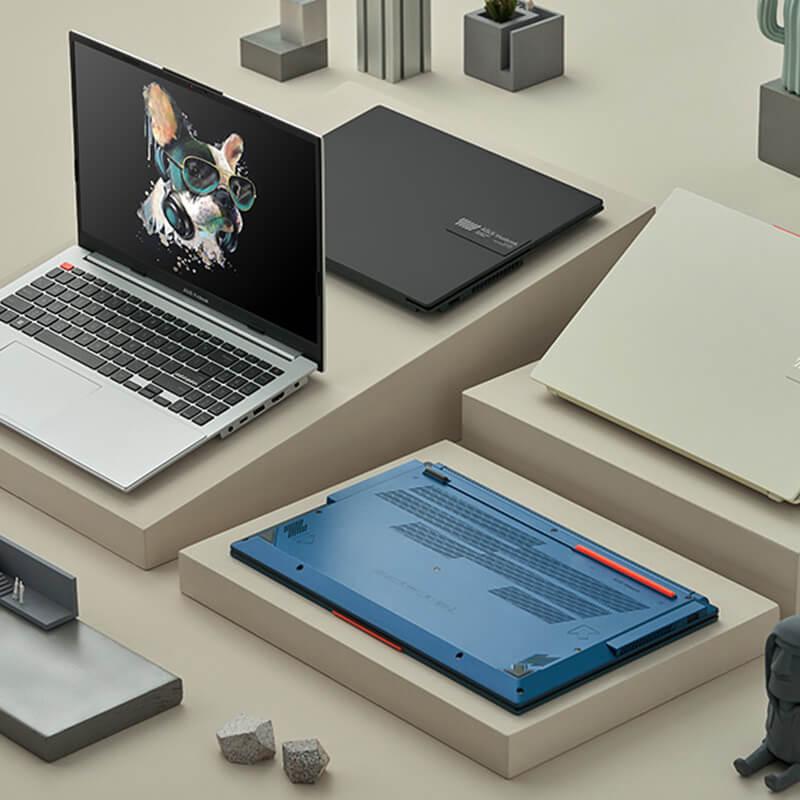Explore how modular laptops let you swap chips, screens & batteries. Real examples like Framework & Intel’s Concept Luna reveal the next era of repairable, sustainable, upgradeable laptops.
Laptops are slowly shifting toward modularity—separable chips, screens, and batteries—driven by sustainability, the right-to-repair movement, and open standards. Yet full modularization is still in its early stage. This article explores prototypes, challenges, and what consumers can expect next.
Smartphones flirted with modularity—remember Project Ara and Fairphone? That same question now echoes in computing:
Are laptops finally becoming modular too—letting us swap chips, screens, and batteries at will?
This in-depth exploration traces how modular laptops are evolving, the real-world brands building them, the science behind the design, and the everyday impact for buyers.
We’ll tackle the exact search questions Americans ask—like “Can I upgrade my laptop CPU?” or “Will modular laptops reduce e-waste?”—so your reading experience stays useful, credible, and easy to follow.
Why Modular Laptops Matter: The Promise & Drivers
Before answering how close we are, it helps to know why modularity excites engineers, environmentalists, and consumers alike.
Key Drivers Behind the Modular Movement
- Repairability & Longevity – Today’s glued, soldered designs frustrate repairs. Modular laptops use screws and slide-in parts so a bad battery or broken screen doesn’t mean landfill.
- Cutting E-Waste – The U.S. EPA notes electronics make up > 2 % of total waste. Longer-lasting modular devices shrink that footprint.
- Cost Efficiency Over Time – Instead of replacing an entire unit, owners can upgrade select parts—saving hundreds.
- Customization & Performance Choice – Pick a high-refresh screen one year, an AI-optimized chip next year.
- Right-to-Repair Legislation – States like California and New York are pushing manufacturers to make devices fixable; modularity is a compliant path.
- Inspiration from Desktops & Phones – PC builders have enjoyed modularity for decades. Extending it to laptops feels inevitable.

What “Modular” Actually Means for Laptops
Because “modular” is often vague, here’s a clearer breakdown.
Levels of Modularity
| Level | Description | Examples |
|---|---|---|
| User-serviceable modules | Replace RAM, SSD, keyboard, battery with basic tools | Most business laptops |
| Swappable mainboard / SoC | Swap entire logic board to upgrade CPU/GPU | Framework Laptop 13 & 16 |
| Modular display | Replace or detach the screen assembly | Compal Adapt X concept |
| Expansion modules | Plug-in IO cards or GPU modules | Framework expansion cards |
| Open standards | Shared connectors across brands | Intel’s proposed spec |
Modularity is therefore not a single switch but a spectrum.
Real-World Examples of Modular Laptops
Framework — The Market Leader in Repairable Design

Framework proves modularity isn’t just a prototype.
- Framework Laptop 13 – Replaceable RAM, SSD, IO cards, even the mainboard.
- 2025 Update – AMD Ryzen AI 300 “Strix Point” board works with older frames.
- Framework Laptop 16 – First notebook with modular GPU bay (RTX 5070 option).
- Framework Laptop 12 – Convertible model with improved serviceability.
Takeaway: Framework already delivers practical modularity, though pricing and availability remain niche.
Big-Brand Concepts & Prototypes
| Brand | Concept | Key Idea |
|---|---|---|
| Dell Concept Luna | Ultra-fast disassembly using minimal screws; recyclable design | Digital Trends |
| Intel Open Modular Design | Separate IO, motherboard, and SoC modules | PC World |
| Compal Adapt X | Award-winning modular screen + dock layout | (concept render) |
| Lenovo Project Aurora | ThinkPad prototype exploring modular display & keyboard | (press concept) |
Even if these stay as concepts, they signal where R&D budgets are headed.
Partial Modularity Already Here
- Rugged laptops (Panasonic Toughbook) still have removable batteries.
- Business notebooks keep screw-mounted SSD / RAM bays.
- External GPU (eGPU) setups via Thunderbolt 4 offer plug-and-play graphics upgrades.
Reality Check: How Close Are We to Fully Modular Laptops?
Engineering Challenges
- Space & Cooling: Thin ultrabooks leave no room for plug connectors.
- Signal Integrity: High-speed circuits (GPU lanes, display ports) lose efficiency through modular connectors.
- Power Distribution: Extra interfaces mean extra resistance and heat.
- Standardization vs. Proprietary Design: OEMs hesitate to share specs.
- Cost: More moving parts = higher BOM cost.
- Consumer Expectations: Buyers still prize sleekness over serviceability.
“I just want to replace my battery without heat-gun surgery.” — Right-to-Repair activist comment
Market Barriers
- OEM Risk: Building new supply chains is expensive.
- Ecosystem Maturity: Without third-party modules, value is limited.
- Price Sensitivity: Early adopters pay more.
- Scale: Modularity must trickle down to mid-range laptops to dominate.
Verdict:
Full modularity is evolving incrementally, not explosively. But momentum is real.
Component-by-Component Outlook
1. Chip / SoC / Mainboard

Now: Most laptops use soldered CPUs. Framework’s replaceable mainboard is a rare exception.
Challenge: Maintaining pin compatibility, thermals, and BIOS support across generations.
Outlook: Expect professional or enthusiast laptops to offer mainboard swaps before mass models do.
2. Screen / Display

Now: Swapping panels is difficult; sometimes entire lid assemblies must change.
Concepts: Compal Adapt X and Dell Luna explore modular or detachable displays.
Challenges: Cable fragility, hinge durability, touchscreen wiring.
Outlook: Likely progression—replaceable lid modules, attachable second screens, or e-ink extensions before true hot-swap panels appear.
3. Battery
Now: Removable batteries remain in enterprise models. Panasonic’s 900 g laptop even revives them .
Challenges: Safety, calibration, thin chassis.
Outlook: Battery modularity will expand fastest—it’s the simplest component to make user-replaceable.
What Consumers Should Know
Pain Points
- Price premiums (Framework ≈ 10–15 % higher).
- Slight efficiency loss due to connector resistance.
- Possible fragility from more connectors.
- Limited vendor ecosystem.
- Future compatibility uncertainty.
Practical Advice
- Choose Repair-Friendly Brands – Framework today; Dell / Lenovo concepts tomorrow.
- Prioritize Screw-Based Assembly – Even non-modular laptops with screw-mounted parts are far easier to service.
- Check Module Availability – Read vendor roadmaps before buying.
- Think Long Term – Modularity rewards 5-year ownership, not yearly upgrades.
- Expect Iteration – Early models may trade thinness for flexibility.
- Stay Firmware-Savvy – Keep BIOS/firmware updated for module recognition.
- Leverage External Peripherals – eGPU, docks, battery packs act as temporary modularity.
- Track Intel & EU Standards – They’ll decide if cross-brand compatibility becomes reality.
User Voices & Industry Perception
“Buggy, compromises on efficiency for modularity, extremely expensive…” — User review of Framework 16 on Reddit
These sentiments mirror broader tech debates: practicality vs idealism. Modularity’s success depends on balancing both.
FAQs –
1. Can I upgrade my laptop CPU (chip) today like in desktop?
Usually not—most laptops solder the CPU or SoC to the motherboard. Only modular designs (like Framework) allow true CPU/mainboard swaps. Standard laptops do allow memory and storage changes in some models, but not CPU.
2. Are there laptops with modular GPUs?
Yes, but rare. The Framework Laptop 16 supports a modular GPU (RTX 5070 in 2025 update). Additionally, eGPUs (external via Thunderbolt) exist already, which functionally separate GPU modules.
3. Will modular laptops reduce e-waste?
Potentially. By enabling users to replace a failed or outdated component instead of discarding the entire device, modular laptops can lengthen device lifespan and reduce waste. But this benefit only materializes if the module ecosystem is healthy and consumers adopt modular practices.
4. Is there a standard modular laptop architecture?
Not yet in mass adoption. Intel has proposed open modular standards for laptops/mini-PCs (separating IO, motherboard, and SoC) with the aim of adoption by OEMs.That said, until multiple manufacturers adopt such standards, modular laptop architecture remains fragmented.
5. Do modular laptops compromise battery life?
They can, due to extra connectors, wiring losses, or spacing constraints. Early modular designs might sacrifice some efficiency for flexibility. But over time, as designs mature, losses should shrink.
6. Can I hot-swap a battery in a modular laptop?
Hot-swapping is complex. It requires continuous power rail switching, sensing, and safety. Most consumer modular laptops today do not support changing the battery while the system is on. But as modular battery tech develops, hot-swap may emerge in rugged or industrial versions.
7. Will mainstream brands adopt modular laptops soon?
Major OEMs (Dell, Lenovo, HP) are experimenting with modular concepts and repairable designs. But full adoption will require overcoming cost, engineering, and ecosystem barriers. OEMs may wait until modular standards solidify.
8. Are modular laptops more expensive?
Today yes—modular laptops often have a premium due to mechanical complexity and lower production volume. Over time, as demand and scale increase, the cost premium could drop.
9. How do modular displays work?
Modular displays may involve detachable lids, swappable panels, or hinged modules. The challenge lies in flexible wiring, signal integrity, touch and sensor routing, and structural design. Some concept laptops (Compal Adapt X, Dell Luna concept) already propose such approaches.
10. Should I buy a modular laptop today?
If you’re a tech enthusiast or need longevity and upgradability, yes—Framework and similar devices are the most future-proof choice today. But be aware of trade-offs in cost, weight, and module availability. If your priority is lowest cost or absolute sleekness, traditional laptops may still win today.
 | Modular laptop GPU concept – Compal Adapt X |
 | Dell Concept Luna – sustainable modular design |
 | Lenovo Project Aurora modular ThinkPad concept |
Use lazy-load plugins to keep page speed high.
Core Web Vitals Checklist:
✔ Compress images
✔ Minify JS/CSS
✔ Enable caching plugin
✔ Responsive layout test (mobile & tablet)
Future Predictions (2025 – 2030)
- Modular laptops move from niche to mainstream professional segments.
- Intel’s open spec sparks cross-brand compatibility.
- Detachable screens & hot-swappable batteries become common by 2028.
- Right-to-repair laws accelerate OEM compliance.
- Independent module marketplaces emerge (selling batteries, mainboards, displays like PC parts today).
Conclusion
So—are laptops becoming modular?
Yes, but slowly.
Battery and storage modularity are leading, followed by screen innovations and, lastly, full CPU/GPU swappability. The movement reflects deeper cultural change: sustainability, freedom to

